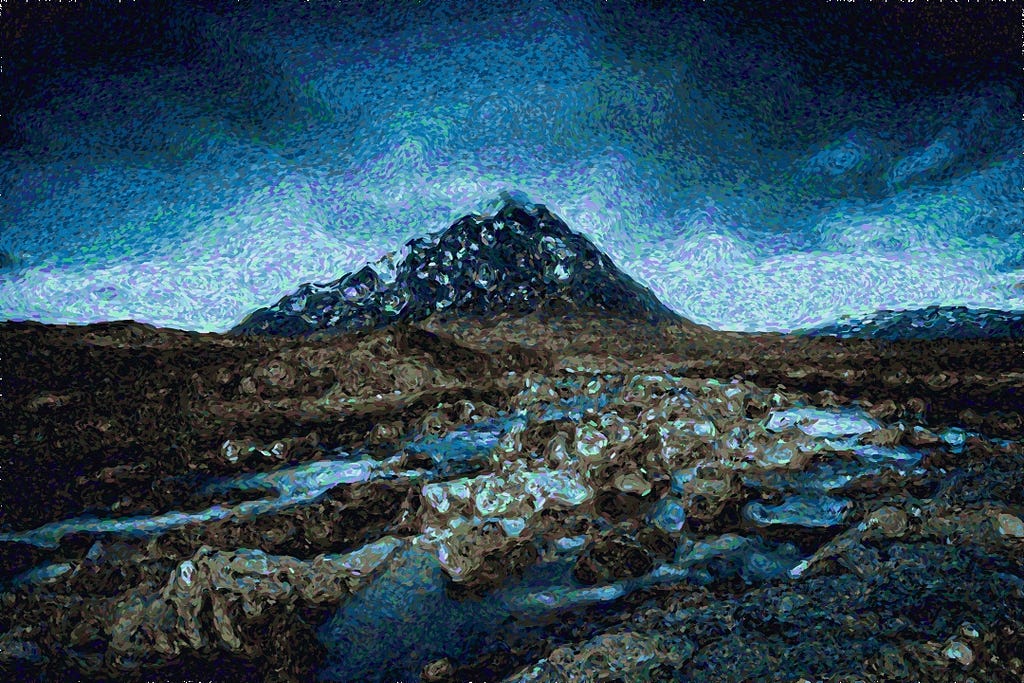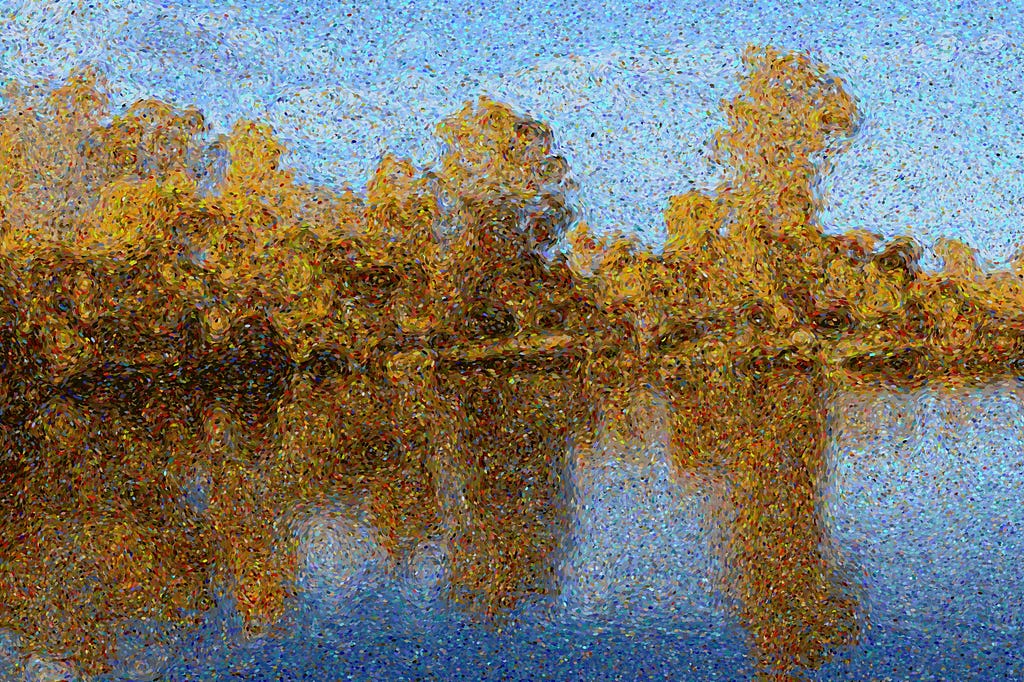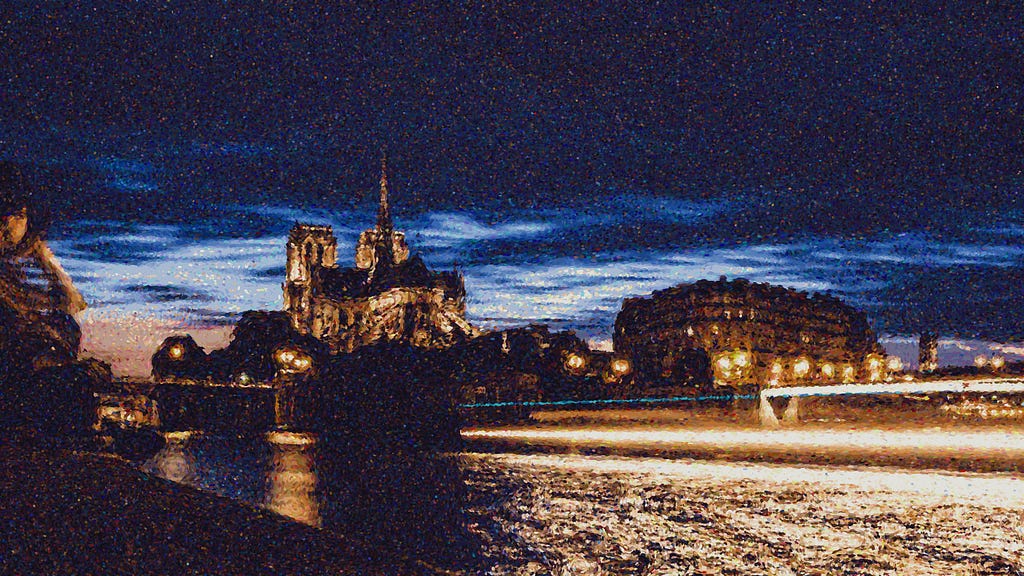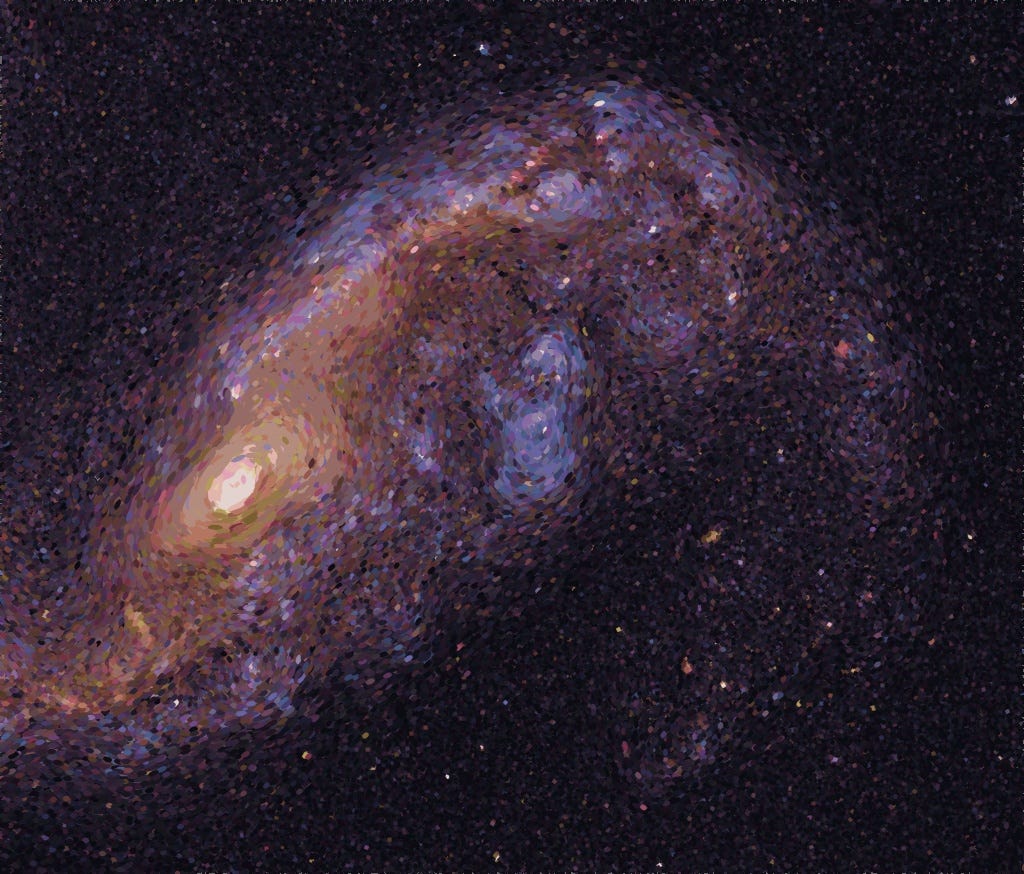Latest news about Bitcoin and all cryptocurrencies. Your daily crypto news habit.
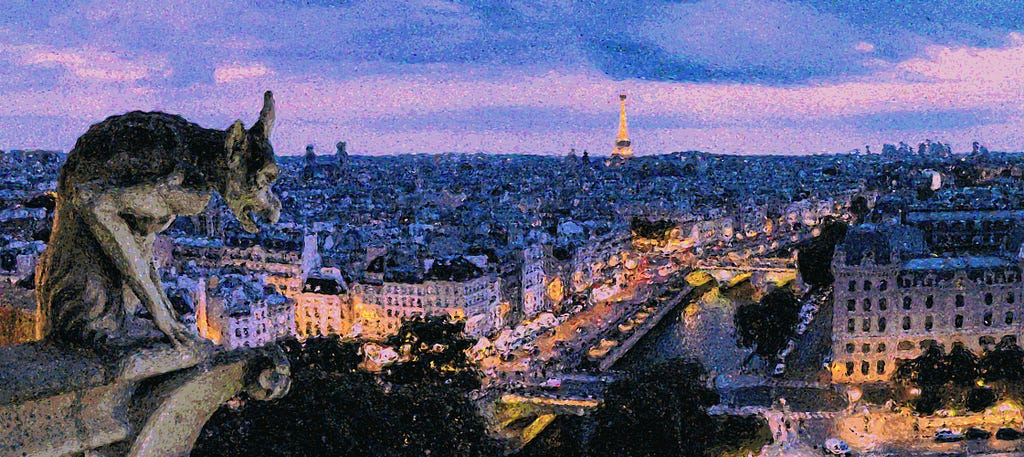 The final result
The final result
One of my favorite painting techniques is pointillism, a technique of painting in which small distinct dots of color are applied in patterns to form an image.
This technique relies on the ability of the eye and mind of the viewer to blend the color spots into a fuller range of tones. The juxtaposition of different colors make them more vivid, giving the whole image more vibrancy.
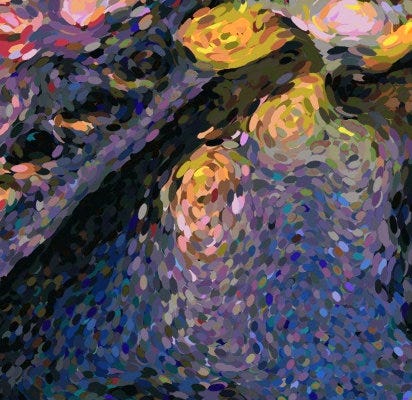 Notice the juxtaposition of colors
Notice the juxtaposition of colors
Pointillism is a gorgeous technique, but in order to make these types of paintings, you need to take a methodical and long approach. Not to mention, you need to be a skilled painter!
As a computer vision developer, I know a lot about processing images — but let’s face it, I’m terrible at drawing.
During my trip to Paris I was inspired to try to emulate pointillists using Python and OpenCV. In this post I will guide you through the approach I developed and the code I’ve written to produce images like the one at the top of this blog post.
JUST LOOKING FOR THE SOURCE CODE? YOU CAN FIND IT HERE
Simulating the Painting Process
The painting process simulation is done in three steps:
- Color palette creation
- Stroke size and length computation
- Actual painting
As an example I’ve chosen a beautiful picture of Paris from https://unsplash.com a website where you can get free pictures of amazing quality. I’ve preprocessed the image with The Gimp to reduce the green shades on the gargoyle and to upscale the Tour Eiffel to make it more eye catching. In general doing a little bit of preprocessing, especially increasing the general saturation, helps getting more pleasing results.
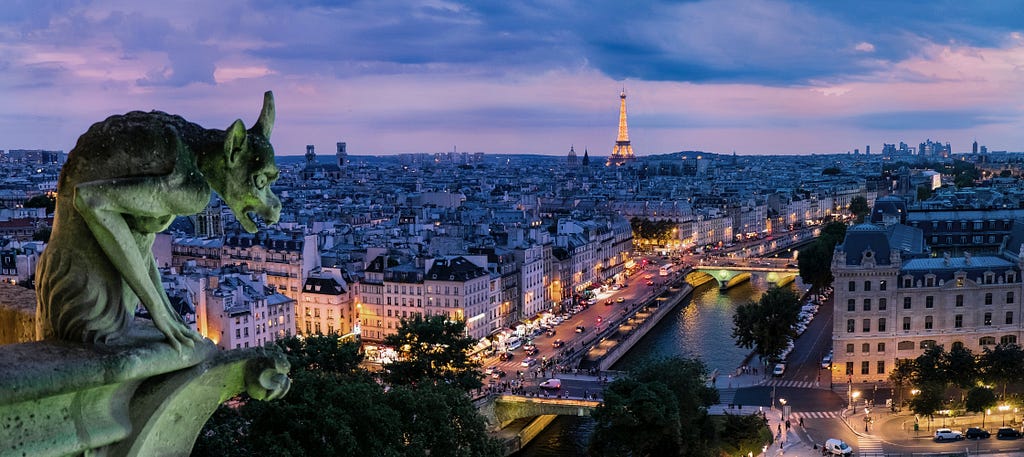 The starting image (source: https://unsplash.com/photos/v6Sy3kyBROE)Color Palette Creation
The starting image (source: https://unsplash.com/photos/v6Sy3kyBROE)Color Palette Creation
First thing we need to decide which colors will be in the palette of our “virtual artist”. We need to choose a set of colors that is coherent with the colors of the image but yet vivid and distinct.
We start by running k-means to select n=20 dominant colors from the image. The “adversarial” nature of k-means produces distinct colors that concentrates around the most frequent colors in the image.
To add vibrancy we augment the palette by adding some variations of the colors chosen by kmeans. I’ve chosen to add a more saturated version of the base palette, and two small variations in the colors (± 20 hue) with a little bit of added saturation.
The first row of the following image represents the palette computed by kmeans, the subsequent rows contains the color variations included in the final palette.
 The color palette computed by kmeans and augmented to be more vibrantStroke direction and length computation
The color palette computed by kmeans and augmented to be more vibrantStroke direction and length computation
To give our final result a more dynamic look we can use small distinct strokes of color instead of circular dots. This is actually a technique used in a lot of pointillist paintings! We want the direction of the brush strokes to be coherent with the content of the image and to use longer strokes to depict edges. For this reason we use the image gradient to decide the length and direction of each paint stroke.
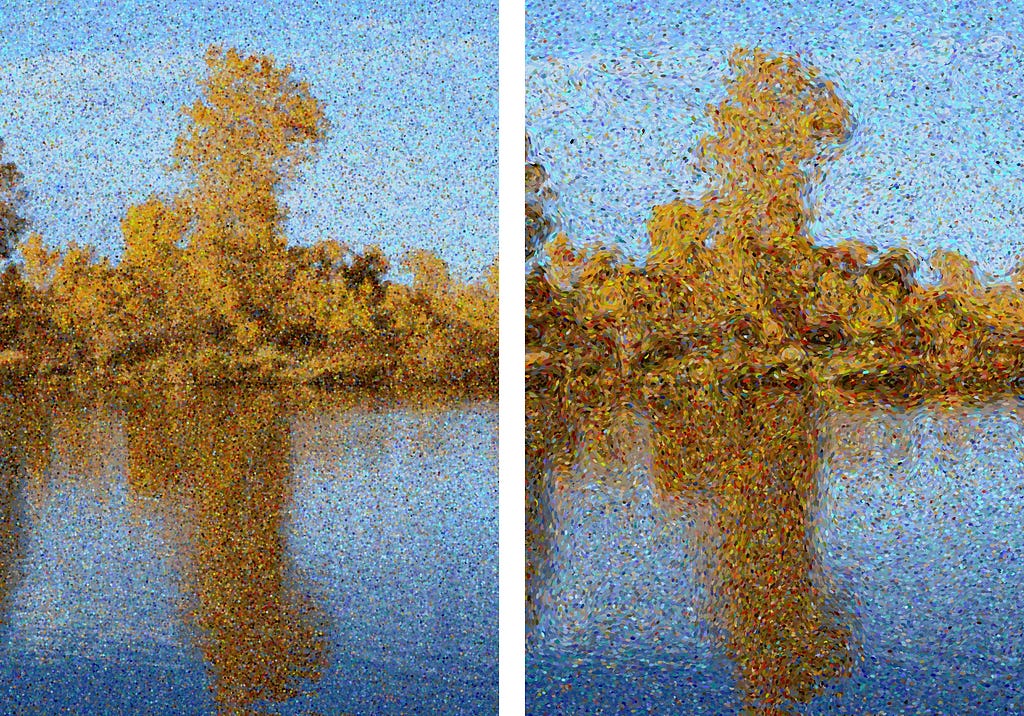 Comparison of style of painting: dots (left), small strokes (right)
Comparison of style of painting: dots (left), small strokes (right)
To compute the direction and length of the brush strokes we take the Scharr image derivative on the x and y axis thus defining a vector field over the image. We then smooth this field using Gaussian blur to give a more coherent look to the final “painting”.
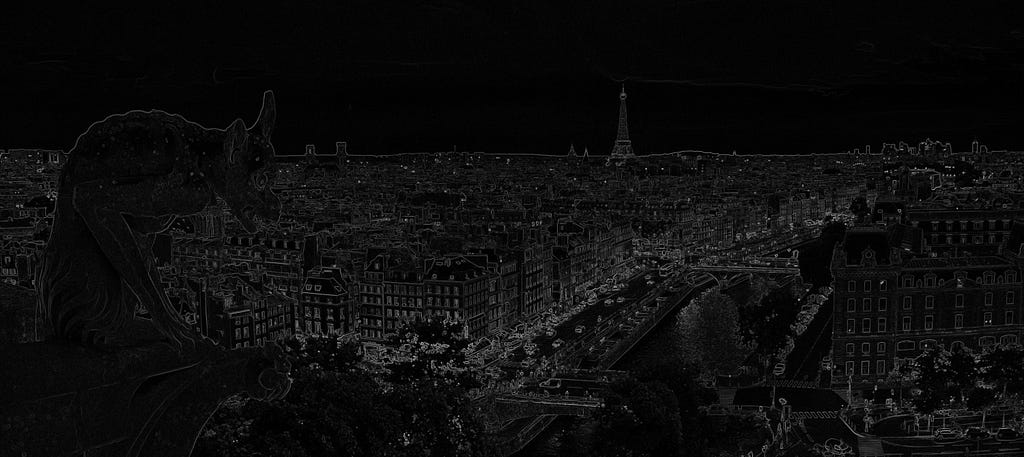 A visualization of the magnitude of image gradient(before Gaussian smoothing)
A visualization of the magnitude of image gradient(before Gaussian smoothing)
The Painting Process
We paint the final results just like a real artist, one stroke at a time! For each stroke we have to decide:
- The position
- The orientation and length of each stroke
- Which color of the palette to use
It may be tempting to chose a random position but this approach has a major drawback: we don’t know when we have painted enough strokes to fill the entire image. So we create a list of strokes positions by sampling uniformly over the image, we add a little bit of random noise to each position and we shuffle the list to give the strokes a random order.
The direction and length are easy to compute once we have defined a vector field over the image using the image gradient.
We rotate the direction of the gradient by 90 degrees because we want the strokes to be parallel to the image edges (the image gradient is perpendicular to the edges). The length is computed depending on the magnitude (i.e. strength) of the image gradient. Here stroke_scale is a parameter that specify the global scale for the strokes, the square root is used to make the strokes more uniform. We don’t want to have too much variance in the length of the strokes.
The choice of the stroke color is probably the hardest part. We want it to be random to get that beautiful juxtaposition of colors, yet we want to be consistent with the source photo. The idea is to chose a color randomly from the palette, giving the colors that are more similar to the underling pixel of the photo a greater probability of being chosen. The probabilities are determined using a softmax function of the similarities between colors.
The Code
You can find the source code here. It corresponds to the algorithm I’ve described here, with some performance improvements. The code is commented and should be quite easy to understand. If you have any questions feel free to ask in the comments :)
Results
Some results with other photos:
I hope you enjoyed this article! If you have any questions feel free to ask in the comments. If you produce some great paintings please post them in the comments, I’m really looking forward to see what you can do with this program!
You can find more information about me on my website https://matteo.ronchetti.xyz
Creating Pointillist Paintings with Python and OpenCV was originally published in Hacker Noon on Medium, where people are continuing the conversation by highlighting and responding to this story.
Disclaimer
The views and opinions expressed in this article are solely those of the authors and do not reflect the views of Bitcoin Insider. Every investment and trading move involves risk - this is especially true for cryptocurrencies given their volatility. We strongly advise our readers to conduct their own research when making a decision.
